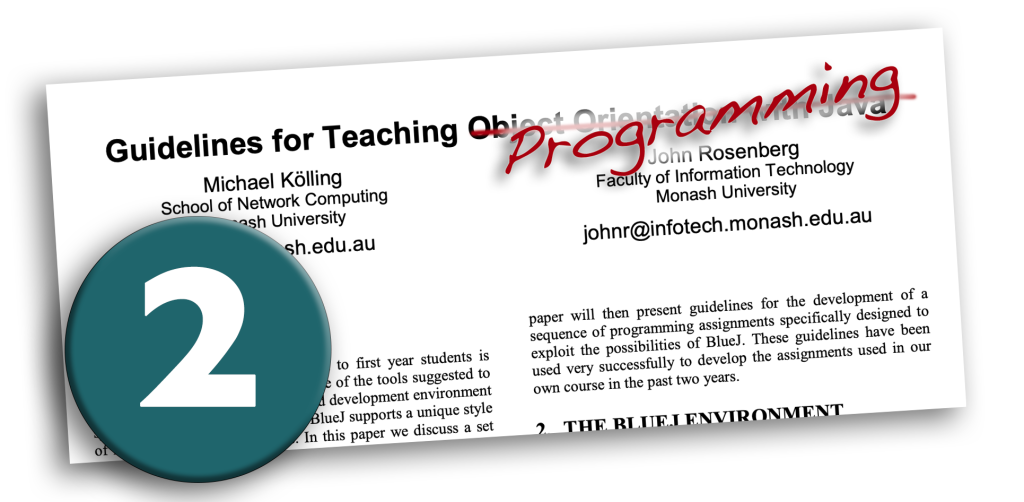
The second guideline from my 23-year-old paper told teachers not to make students start with a blank screen.
Putting learners in front of an empty screen and saying “Today we are going to write a program” always seemed very strange to me. I think programming may be the only discipline that that would ever approach learning this way. It is the equivalent of teaching English Literature, and making students write a story before they have ever read a story. (Or, indeed, heard a story, or know what a story is.)
Imagine French learners writing French before reading it. Or children learning to play the violin being taught to play without ever having heard music before.
Code reading is a skill that is (at least) as important as code writing.
So: Start by giving your students a small program that does something (hopefully interesting! – more on that later), and get them to execute and experiment. Then get them to make small modifications. Let them experiment.
And free yourself from that idea that you have to completely explain everything they see on screen before they are allowed to look at it! Young learners are resilient – they can cope with a bit of intrigue and mystery.
Sitting in front of an empty screen as a beginner can have a paralysing effect. Being able to experiment and play is an easier, less intimidating approach. Bonus: The quick learners can make guesses and experiment.
Starting with a blank screen requires knowledge, planning and design. Tinkering is easier and gets you further quicker. And it makes it easier to show interesting examples early. (More on interesting examples later.)
In your first class, creating curiosity and engagement is more important than teaching the first bit of syntax. At the end of the class, you want them wanting to come back wanting to know more, not running away from a dispiriting experience.
